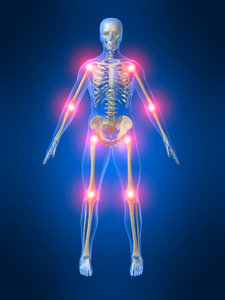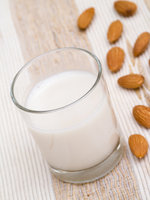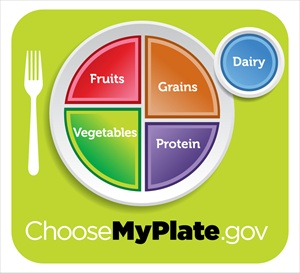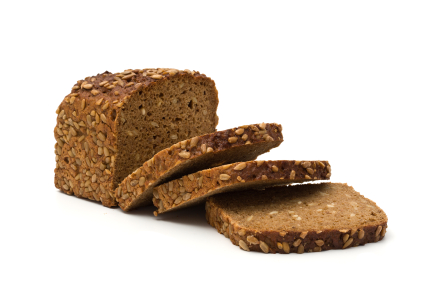Benefits of Calcium - an essential mineral for bone and body – get enough through diet or supplements
The benefits of calcium involve getting enough and absorbing what you get.
Why We Need Calcium
- Its Many Benefits
Calcium is an essential mineral found in every tissue of the body.
Calcium is one of the most prevalent minerals in the human body. It’s most celebrated role is maintaining healthy bone. It’s no surprise that 98% of our calcium stores are found in bones and teeth.
The remaining 2% of the body’s calcium stores are located in soft tissue including muscles, blood and the nervous system. Despite the smaller proportion of calcium in soft tissue it is essential for many physiological functions, including
- Muscle including heart contraction,
- nerve function,
- blood clotting, and
- enzyme and hormone production.
Without enough calcium absorbed effectively, good health, if not life itself, would be impossible.
As with other dietary minerals and nutrients, balance is key. Too much calcium, like too little, can be a bad thing. In fact, an excess of calcium can cause or worsen many health conditions.

In this article about the benefits of calcium, we’ll explore both sides of the calcium coin.
As well, we’ll discuss the issue of how best to get your calcium and in what form – dairy or plant foods? diet or supplements?
|
Symptoms of Calcium Deficiency - The Flip Side of the Benefits of Calcium
Because of its starring role in the body, there are many health conditions where lack of calcium may play a role.
Symptoms of calcium deficiency can include the following:
· Muscle cramps
· High blood pressure
· Convulsions
· Tremors and nervousness
· Insomnia
· Lethargy
· Poor appetite
· Bone and joint pain
· Tooth decay
· Abnormal heart rhythm
Calcium Deficiency Conditions Where Additional Calcium Might Benefit
The following health conditions are linked to calcium deficiency.
· osteopenia, osteoporosis as well as soft bones or osteomalacia or rickets
· cardiovascular disease
· high blood pressure or hypertension
· cancer of the colon and rectum
· cancer of the prostate
-poor weight managementAchieving Calcium Benefits – Calcium Absorption is a Matter of Getting the Right Form of Calcium and the Right Calcium Cofactors in your Diet.
One of the main tricks to getting the calcium you need is ensuring your body absorbs and maintains the calcium you consume.
...There are many ways this may not happen.
The typical north American diet is often calcium rich with a fridge full of dairy and calcium-fortified foods on the menu along with widespread use of calcium supplements. Because of this, people think they’re home free when it comes to strong bones and calcium deficiency diseases.
This isn’t always the case.
The problem is the calcium in these calcium-rich dietary and supplement sources isn’t always absorbed by the body.
There are several possible reasons for this. (i) The form of calcium supplement may not be particularly bioavailable; (ii) the person may lack the dietary cofactors needed to utilize the calcium; (iii) the person may consume foods or medication that hinder calcium absorption; (iv) age or medical conditions may reduce calcium absorption; (v) in the case of calcium supplements, the dose may be too great to be absorbed in one go. The excess calcium may be excreted or, worse, cause or exacerbate other health problems.
Calcium’s Benefits as a Bone Builder – Examining the Skeletons in the Closet
Calcium’s best known role is as a bone builder. Calcium is a key player in this process and strong bones are one of calcium’s major benefits.
Contrary to what you might think, bones are not static artifacts but dynamic tissue that is constantly forming and being reformed.
Diet, as well as additional environmental factors like weight bearing exercise, hormone levels including adequate vitamin D, have a profound effect on the formation and ongoing health of ones’ bones and teeth. As well, the presence of other bone building nutrients like magnesium, manganese, phosphorus and boron are essential for healthy bone.
While calcium may have been billed as the star player when it comes to bone health, it is definitely part of an ensemble cast. There is no show without the other players.
Bone and Teeth – The Body’s Calcium Bank – Why Topping Up the Calcium Account on a regular basis is so important for Bone Health – Benefits of Calcium
Bone and teeth play double duty as the body’s calcium bank. The key is to make sure you don’t go into overdraft. This is particularly important for your bones.
If one’s diet is calcium deficient, the body will tap the calcium account stored in bone and teeth before going to the calcium stored in soft tissue. The soft tissue that require a stable and, therefore tightly regulated, calcium supply to keep the heart beating, the nerves firing and enzymes functioning.
While these short term loans from the bone bank may work fine occasionally if replenished pronto, the problem for your body or bank account occurs when you withdraw more than you deposit on a consistent long term basis. An overdraft situation, in either case, can be hazardous to your financial and bone health.
Even a minor calcium deficiency over time can wreak havoc with your bones, in the form of osteopenia or low bone mass. If calcium deficiency, even a mild level, is long term enough, ostopenia can progress to osteoporosis or brittle and porous bones. The last increases your risk for bone fracture and is epidemic among post-menopausal women.
As mentioned, while osteoporosis and osteopenia are often the result of chronic calcium deficiency, they can also indicate poor calcium absorption or retention which may be the result of inadequate levels of other nutrients or co-factors needed for proper calcium absorption and function. As mentioned, these bone building cofactors include Vitamin D, magnesium, phosphorus, and hydrochloric acid (stomach acid), all of which the body needs in adequate amounts to metabolize calcium including that into the bones.
Other factors that may prevent efficient calcium absorption include the presence of dietary phytates and oxalates found in some plant sources of calcium; although it’s questionable how much the latter reduces calcium absorption. In the case of phytates, certain preparation methods can reduce their calcium blocking effects and, in turn, enhance the benefits of calcium with that particular food.
Many times calcium deficiency is not an issue of insufficient dietary calcium per se; but an issue of poor calcium absorption from food and supplements. In fact poor absorption can be a major issue in preventing enjoying the benefits of calcium.
Below are strategies to ensure that your body absorbs and benefits from the calcium it gets .
How much do you need to enjoy the benefits of calcium?
There is debate about how much calcium one needs for good health and to enjoy the benefits of calcium. It’s clear that the optimal level may vary and depends on your age, diet, hormone status, overall health, as well as specific medical conditions, including mental health conditions, you may suffer.
This means there is no standard intake for everyone.
Depending on your age and reproductive state, you absorb calcium better or worse from whatever food or supplement source you rely on. Children whose bones are growing are very efficient at absorbing calcium. Pregnant women as well are efficient at absorbing the calcium consumed, arguably as extra calcium is needed by the growing fetus.
By contrast, adults absorb only around 30% of the calcium in food, depending on the calcium source.
Post-menopausal women have been tracked as absorbing only 7% of the calcium present in a food. This reduced ability to absorb calcium and, therefore, achieve the benefits of calcium may be a function of several factors including age, hormone status and stomach acid levels and digestive health generally, among other reasons.
|
Health Conditions that May Affect Calcium Metabolism and the Benefits of Calcium
As mentioned certain health conditions may affect the body’s calcium balance and include the following:
· Kidney Disease
· Hypothyroidism including Hashimoto’s Thyroiditis
· Hyperthyroidism including Grave’s Disease
· Bariatric or other intestinal surgery.
· Crone’s Disease
· Anorexia Nervosa
How Much Calcium Do you Need Per Day to Reap the Benefits of Calcium?
You need a regular supply of calcium to maintain healthy bones and teeth and other tissue.
|
For more on the US government’s guidelines on the amounts and benefits of calcium press here.
Children need substantially greater amounts of calcium for their smaller weight and size than adults. This is because children are growing and need bone and tissue-building nutrients in spades. As mentioned, post-menopausal women and older men need more calcium than younger adults, likely because their absorption ability is decreased.
Some experts consider the US government figures on the high side and urge a person, instead, to focus on ensuring that the calcium one gets, whether via supplements or diet, is adequately absorbed and not excreted.
The focus should be on quality of absorption versus the quantity of calcium.
Getting the Benefits of Calcium – Diet versus Supplements
Like with most nutrients, a healthy diet is generally the best way to obtain calcium; in part because a healthy diet supplies not just calcium but other nutrients essential for effective calcium absorption and function as well as good health. Despite diet being the preferred way to get your calcium, research suggests some exceptions where the benefits of calcium are possibly better achieved via calcium supplements than via food.
One such case is the prevention of colon cancer in genetically predisposed individuals or those who have suffered a bout of colon cancer already. Studies suggest that calcium supplements, as opposed to dietary calcium sources, reduce the incidence of pre-cancerous growths in these individuals.
For some it is a challenge to get enough calcium through food, because of advanced age, diminished or unbalanced hormone levels, lifestyle factors or particular aversions or intolerances to calcium rich foods like dairy. In this case, supplements can be essential to achieve the full benefits of calcium.
We’ll offer some tips on the best ways to take calcium supplements as well as the best supplement form to take, should you decide supplementing is right for you.
With this in mind, let’s explore how you can best achieve the benefits of calcium.
Show me the Money – What Foods to Eat to Maximize the Benefits of Calcium?
|
More is not Always Better to Achieve the Benefits of Calcium
If you get any message from this article, it’s that simply increasing the amount of elemental calcium you consume or the number of calcium pills you pop may not lead to the prevention or cure of calcium deficiency conditions like osteoporosis or osteopenia.
In essence more is not always better when it comes to achieving the benefits of calcium - instead, more effective absorption and maintenance of the calcium you do consume is often the key to enjoying the benefits of calcium.
In support of this, people in countries that consume the highest amount of calcium-rich dairy products and supplements like the US and northern Europe have some of the highest osteoporosis rates; while populations in countries that have lower dietary calcium consumption such as in Asia and Africa, have lesser rates of osteoporosis and bone fracture. These statistics suggest that there is more to the amount of elemental calcium consumed – and it’s worth looking at factors that promote calcium loss or, for that matter, prevent calcium absorption that may lead to these high rates of calcium deficiency diseases among high calcium consumers.
Plant Versus Animal Foods as Sources of Calcium – What is best to achieve the Benefits of Calcium? Consider Veggies and Their By products to Meet your Calcium Needs
Many experts argue that, while dairy products may contain large amounts of elemental calcium, plant sources of calcium may be a better bet.
- First, plant food sources are better absorbed than diary food sources - Some experts site a 30% absorption rate for dairy foods versus a 50% to 70% absorption for plant foods .
- Second many plant sources, unlike dairy foods, provide the cofactors that aid calcium absorption.
- Third, many plant sources, especially the dark leafy greens, contribute to alkalizing blood PH levels; by contrast, dairy products alone can make the blood more acidic.
While dairy products may play a valuable part in your calcium plan; they should not be to the exclusion of plant based calcium sources, which offer many nutrients important for proper calcium absorption.
The bottom line is dairy foods are not essential to meet your calcium needs. Plant food sources alone or in combination, can do it.
Population based studies support this.
Tips for Optimizing the Absorption and Benefits of Calcium
- Ensure you get adequate calcium cofactors whether through diet or supplements – It’s important to get enough cofactors essential for calcium absorption including magnesium but also potassium, manganese and zinc. The typical north American is magnesium deficient due to the low consumption of dark leafy greens. With respect to the ratio of calcium to magnesium, aim for a 2:1.
- Take calcium supplements with food unless it’s calcium citrate - When taking calcium supplements, especially calcium carbonate, ensure you take with food or another dietary acid like vinegar or citrus.
- Avoid antacids - Antacids reduce the amount of stomach acid (hydrochloric acid) needed for proper calcium absorption. Anything that neutralizes stomach acid can diminish calcium absorption.
- Ensure your stomach acid is adequate– Chew your food - With advanced age or use of antacids a person can have reduced stomach acid levels and, therefore, compromised calcium absorption. Chewing food triggers the production of stomach acid and makes nutrients including calcium more available for digestion. So along with chewing your food thoroughly, consider a hydrochloric acid supplement to boost digestion, if necessary.
- Don’t take more than 500 mg of calcium at one time in supplement form. At best, it won’t be absorbed entirely and will be excreted. At worst, high dose calcium may increase the risk for health conditions like myocardial infarction and stroke. For more on the long term dangers of high dose calcium supplements press here.
In general, the rate of calcium absorption diminishes in relation to the amount of calcium consumed – the more you get; the less is absorbed. This means mega-dosing won’t necessarily help you achieve the benefits of calcium and it could be bad for your health.
Instead, take your calcium supplements in doses no greater than 500 mg at regular intervals throughout the day. 500 mg represents about the maximum elemental calcium you could get in one meal so there is some physiological basis to this figure.
The above aside, there are some medical conditions for which high dose calcium supplementation, sometimes intravenously, is advised including pre-eclampsia, a potentially lethal form of high blood pressure during pregnancy; reduction of lead levels in children; and reducing phosphate levels in kidney disease patients.
- Ensure a healthy PH balance in the blood by eating enough alkalinizing as opposed to acid forming foods – If your blood becomes too acidic, as may occur when you consume an excess of acid forming dairy products to meet your calcium needs without sufficient alkaline foods, the body may use the calcium in bone or teeth to buffer the acid, leading to osteopenia or osteoporosis.
- Boost your calcium absorption from diet and therefore the benefits of calcium by consuming calcium rich food along with an acid like citrus or vinegar - Drizzle a lemon or vinegar based dressing on green leafy salads made of calcium rich kale or broccoli. Make a vinaigrette by soaking calcium-rich herbs like basil, thyme and dill in vinegar. Prepare your food so as to reduce phytates and boost your calcium absorption – Phytates reduce the absorption and, therefore, benefits of calcium.
- Many plant sources of calcium, including beans, seeds, nuts and whole grains contain phytates. Reducing phytates will also improve absorption of some calcium cofactors including, magnesium whose absorption, like calcium’s, is affected by the presence of phytates.
- Manage your response to stress - Chronic stress can lead to sustained high cortisol levels which, in turn, can increase calcium excretion and lead to osteoporosis.
|
Remember preventing calcium deficiency conditions isn’t always a matter of getting more calcium. Instead, it’s as much about ensuring that the body can absorb and retain the calcium it gets.
Too Much of a Good Thing – When the benefits of calcium are undermined by an excess of calcium
Unabsorbed calcium will be excreted via urine and feces or, worse, lodged in soft tissue where it can create health problems. The effects of this rogue calcium are much more likely, if unopposed by other nutrients that may counterbalance calcium’s effects.
Excess calcium has been linked with the following health conditions:
- atherosclerosis
- arthritis
- kidney stones
- heart arrhythmia
- hypertension
- senile dementia
- fibromyalgia
- PMS
- constipation
reduced absorption of iron and zinc which can lead to anemia and infertility respectively as well as other conditions.
Recognizing that calcium promotes muscles contraction, it’s not surprising that an excess of calcium is associated with the muscle pain of fibromyalgia and PMS, the irregular heartbeat of arrhythmia and myocardial infarction. The heart, like other muscles, need to relax as well as contract to work effectively and pain free.
Too much (or too little) calcium can lead to imbalances in other minerals in the body. Diet minerals must be in balance with each other. An overabundance in one can lead to a relative, if not an absolute deficiency , in another with the result that neither mineral functions properly in the body. For example, calcium without the presence of sufficient magnesium, may lead to both calcium excess and magnesium deficiency symptoms like muscle pain.
Caution about Mega Dosing with Calcium Supplements – To Ensure you Reap the Benefits of Calcium and not its downside
As mentioned, the research suggests potential dangers for mega-dosing with calcium which don’t exist when calcium is obtained through diet. Unless you have a specific condition that requires higher doses of calcium, experts suggest that you take no more than 500 mg of elemental calcium at any one time. Stagger your doses throughout the day in order to achieve your desired daily intake.
Cautions When Consuming Calcium Rich Food or Supplements and Medications–
Calcium rich food and supplements can reduce the effectiveness of certain medication when taken together including thyroid hormone like levothyroxine: the antibiotic, tetracycline; and bisphosphonates used to treat osteoporosis.
With respect to calcium rich foods or supplements, and thyroid replacement hormone – take them several hours apart from the above medications or as recommended by your health care provider.
Cofactors, Acids and Hormones needed for the body to Absorb and Use Calcium
Vitamins and Minerals
As mentioned, there are nutrients that, if missing or inadequate in the diet, will prevent the absorption and, therefore, function of calcium. These include the minerals magnesium, manganese, phosphorus, potassium, iron and zinc as well as Vitamin D. Sufficient amounts of Vitamin A, B6, C and E are also required for the body to fully use the calcium it gets.
Acid for Absorption
Also mentioned, consuming calcium rich food or supplements with an acid aids calcium entering the tissues where needed. This is why adequate stomach acid is key for good calcium absorption. Some studies have shown that 40% of post-menopausal women had diminished stomach acid and arguably poorer calcium absorption. The corollary is that anything that reduces stomach acidity, like antacids, will hinder calcium absorption.
Hormones
Various hormones also play a role in the absorption function of calcium, especially when it comes to bone building. These include hormones produced by the adrenal, pituitary and sex organs. These include adrenaline, the thyroid hormones and estrogen and progesterone among others . If the above hormones are not in balance (either in excess or inadequate) , available calcium may not be adequately absorbed or maintained.
This is why people with an excess of thyroid hormone (as in
the case of untreated hyperthyroidism or Grave’s disease) or those with diminished levels of estrogen or
progesterone (post-menopausal women) routinely suffer reduced bone density,
unless they adjust the amount of bone building nutrients they consume.
Tips for Choosing Supplements and Maximizing the Benefits of Calcium
Make sure the form of calcium supplement you take is bioavailable; in other words, well absorbed.
When it comes to calcium supplements , calcium
citrate is preferable to calcium
carbonate. The former is well absorbed because it contains an acid and can
be taken without food. Calcium carbonate,
by contrast, should be taken with food to be absorbed properly. Otherwise, you won’t be getting the bang
for your buck.
Other well absorbed forms of calcium and good bets for supplements are calcium malate; calcium fumarate, calcium succinate, calcium aspartate, and calcium amino acid chelate. One option is to take a bone complex that combines calcium with its cofactors including magnesium and other nutrients. There are many of these on the market. They are useful, if well designed, because they provide the right ratio of nutrients.
Bone meal is not considered a good form of calcium supplement because it can be poorly absorbed and include impurities like lead. Similarly antacids containing calcium carbonate are not advised, firstly because calcium carbonate itself is poorly absorbed and secondly antacids reduce stomach acid levels which, in turn, reduce calcium absorption.
What affects calcium absorption and how to improve yours in order to maximize the benefits of Calcium
How much calcium you absorb from food and supplements depends on a number of factors including
Dietary Factors - Aside from the various above listed cofactors that are needed for efficient calcium absorption including magnesium , an excess of phytates can reduce calcium absorption (see above) as well as foods containing oxalic acid, which include spinach, beets, celery, pecans and tea. Fiber can also increase calcium excretion, as the calcium binds with the fiber and is excreted in feces before entering the tissue.
Your age – Babies, children and pregnant women absorb much more calcium from the food they eat because of the incredible growth occurring within. Adults absorb only 20 to 30% of available calcium depending on the dietary form. Older people including post- menopausal women can absorb as little as 7% of the elemental calcium found in food.
Kidney Function – People with poor kidney function (often older adults) may excrete excessive amounts of calcium.
Medications – As mentioned, those taking antacids regularly may not be absorbing as much calcium as they think. Prednisone and other corticosteroids may decrease calcium absorption. Diuretics can also accelerate calcium loss via urine.
Health Conditions Affecting Hormone Status - Several health conditions , especially those that affect hormone balance, can affect the absorption of calcium and bone health.
- Calcium induced magnesium deficiency can be bad for diabetics trying to control their blood sugar. Magnesium is needed to get insulin into cells.
- Lower estrogen and progesterone levels as a result of menopause, excessive weight loss or intense exercise can cause calcium loss.
- Untreated thyroid conditions including hyperthyroidism or Graves disease can increase calcium excretion and leave bones vulnerable for fracture.
- Stress and the attendant release of excessive adrenal hormones such as adrenaline and cortisol can, in the long term, promote calcium excretion and lead to brittle bones and osteoporosis.
Tips to Improve Calcium Absorption and Retention and maximize Calcium Benefits
- Chew your food well – chewing triggers release of hydrochloric acid in stomach which aids calcium absorption.
- Consume enough magnesium rich foods along with your calcium foods– aim for a 2 to 1 calcium/magnesium ratio.
- Avoid antacids that neutralize stomach acid and, therefore, hinder calcium absorption especially ironic when some doctors recommend antacids containing calcium carbonate to avoid osteoporosis.
- When supplementing calcium, take bioavailable forms like calcium citrate and avoid forms poorly absorbed forms like calcium carbonate. Take one that includes an adequate complement of magnesium and other calcium cofactors as part of a well-designed bone complex.
- Reduce the effects of phytates found in plant foods by soaking beans overnight before cooking; sprouting seeds and bean; and cooking whole grain products.
- Deal with stress especially the chronic kind so it doesn’t leach calcium from your bones and leave you vulnerable to osteopenia and osteoporosis.
- Get sufficient Vitamin D to ensure effective calcium absorption.
- Avoid excess blood acidity by eating sufficient alkaline foods. When the blood becomes overly acidic due to, for example, an excess of animal protein and insufficiency of alkaline food, such as found in dark green leafy vegetables, the body may use its calcium stores in bone and teeth to buffer the acid. The result is a loss of calcium.
The best foods for calcium – Strategies for Maximizing the Benefits of Calcium
The best foods for calcium are those that not only provide your calcium needs but also ensure you get enough of the calcium cofactors. While diary is high in calcium, relying on it as your sole dietary source of calcium is not wise, unless you ensure you get adequate calcium cofactors via food or supplements.
Press on the below links for more information related to the Benefits of Calcium and other health and diet issues...
|
Vitamin D Foods |
Zinc |
Magnesium |
Calcium |
Vitamin C |
|
Anti-inflammatory |
Cancer & Nutrition |
Cancer Prevention |
Anti-oxidants |
Chromium |
To read more about a Healthy Balanced Diet, click here.
To read more about Vitamins and Mineral Supplements, click here.
To read more about the Benefits of Vitamin D, click here.
To read more about the Benefits of Magnesium, click here.
To read more bout the Benefits of Zinc, click here.
To read more about the Benefits of Vitamin C, click here.
Press here for more about heart healthy diet fundamentals.
Press here for more about heart attack supplements.
Press here for more about high blood pressure supplements.To read more about how to read food labels, click here.
To read more up-to-date- information about Healthy Diets and your health, click here.
To go back to Healthy-Diet-Healthy-You home, click here.
Calcium Supplements & Best Calcium Supplement Formulas.





















